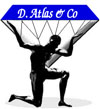When one looks for solutions to problems it is best to look for the simplest possible one. There may be more than one legitimate way to solve a problem or to accomplish a task, but the simplest method that does the job correctly is the one to ultimately choose. It is not wrong to try various methods, but when it comes time to adopt a standard approach to universally solve a certain problem or task, then the simplest method that provides the best results or equivalent results must be preferable.
I have often said that one would always use a scale to obtain the exact weight of a diamond in preference to measuring the length, width, and depth and then using the GIA formula for the particular shape to estimate the weight. It is good to understand both methods, as one does not always have a scale or an unset diamond, but when the diamond is not set and a scale is available, no one should use the more complex, less accurate, method.
In the past 15 years or so, I have suggested to many people that the AGA Cut Class system that I developed for screening the best cut round and fancy shaped diamonds was as good a method, or better, for judging diamond cut quality. It was totally based on parametric measures of the diamond and grounded in the Tolkowsky-like model that jewelers had grown to accept as the basis for best cut. Through my experience dealing with many diamonds over the past 39 years, I felt confident that diamonds within the best cut range would nearly always stand up as well cut and be quite pretty. Now craftsmanship is one thing and pretty must be considered another. We can judge craftsmanship based on several objectively measured characteristics of specific diamonds. However, “pretty” or beautiful remains somewhat subjective and will always be part of what each customer uses to select one diamond from many.
One must remember certain given characteristics of faceted diamonds. We are not talking about randomly made items, but something that is cut in very traditional ways and highly repeated and developed styles. Diamond rough is costly. Cutters must consider several things with every single piece of rough. They must consider retained weight, the market that stone will likely be offered into, the crystal characteristics of each diamond, and the unique placement of inclusions. In addition, they must have an eye for getting the subjective beauty to show. Believe me, I have owned a few unusually cut diamonds over the years where I saw rarity of the cut as desirable, but few others felt the same. These were very difficult to sell. Therefore, diamonds are cut within quite narrow parameters of symmetry, facet style, and appearance. This is a given. You just do not see wide variation in cutting and this will serve to provide us good assistance in getting a rather simple system to work for grading the Light Behavior and Craftsmanship Grade of a diamond.
ImaGem uses three measures for judging the Light Behavior of a diamond.
These are: Brilliance, Sparkle and Intensity. The definitions are provided below:
Brilliance: a measure of a stone’s overall strength of light return that represents its average light return in the face-up position. This measure is arrived at by computing the mean gray-scale value of all pixels within the girdle portion of a diamond.
Sparkle: a measure of those spangle-like flashes of reflected and refracted light that gives diamonds what might be called “life” or “kick”. The greater the number of these flashes, the higher a stone’s sparkle. This measure is arrived at by measuring the standard deviation in the gray-scale value of the light return within the girdle image.
Intensity: a measure of the number and strength of contrasting light-dark areas in the girdle portion of a diamond that give it vitality and character. The greater the stone’s symmetry the higher its intensity will be. This measure is arrived at by calculating a ratio of bright pixels to the total number of pixels within the girdle.
Because of the rather consistent manner in which diamonds are cut, these three rather simple yet scientific measures serve to well define Light Behavior in diamonds and can readily act as metrics to delineate the quality of Light Behavior beyond the ability of even expert human eyes. Grading diamonds to levels beyond the ability of human perception to discriminate is the accepted norm of the traditional diamond business. Few people can tell the difference between one or two color grades or clarity grades. Experts can do this far better than amateurs, but our data shows that agreement on color grading among experts is only 65% under the best conditions in proper laboratory environments. This is why labs differ in their grading of color and nothing but an advancement of technology stands to cure the human inability to color grade to a higher degree of consistency. While we have not yet studied the clarity issue so closely, our supposition is that human grading is somewhat inconsistent there, as well. Technology will advance to make these grades far more reliable.
The measure of Brilliance is based on the fact that the camera sensor used in ImaGem reads 256 values from total black to total white. In between are shades of gray. The higher the number, the less black there is with 0 representing black and 255 representing white. The brilliance reading is the AVERAGE of all the pixels within the face-up view of the girdle outline, Better diamonds do return more light, but a diamond hat returned enough light o show only white pixels would have no beauty or merit. It would be very bright, but not sparkly or show contrast. The best round diamonds show 200 to 150 gray scale average values. The best princess cuts show 200 to 130 gray scale average values.
One should keep in mind that the lighting inside the VeriGem is not truly unusual, but the situation is highly controlled, not like jewelry store lighting, and loaded with computerized functionality. We don’t want to see any large number of pixels reading at 255, so controlled light intensity is used in order to discriminate all levels of light return present in each diamond.
The measure of Sparkle is based on the range of light to dark pixels present in the diamond. When we measure average light return there are much brighter and much darker pixels present. Sparkle is simply a report of how diverse, how far apart, the high and low gray scale readings of the pixels is within the diamond. For example, 5 is the average of all of these: 555 – 456 – 357 or 258. The standard deviation of 555 is 0, for 456 the standard deviation is 0.8, for 357 it is 1.78 and for 258 it is 2.64. Now these are just simple examples based on a mathematical formula, but I hope you can see the point and gain a basic understanding of the measure of Sparkle.
The measure of Intensity also has some connection to the diversity of gray scale values in each diamond measured. All faceted diamonds, even rather poorly cut ones, have some degree of variation is gray scale readings among all their pixels. Obviously, the best performing diamonds would have a higher number of bright pixels. What ImaGem does is calculate the brightest range of pixels and reports it as a percentage of the total number of pixels. When you see an ImaGem Intensity grade of 200, all you do is move the decimal 1 space to the left and you have 20% as the percentage reading of the brightest pixels compared to the total. It is a measure of contrast.
The three measures tend to rise as diamonds become higher in light return, but patented and un-branded cuts of great beauty reside well within the norms of high performance. Not all are at the ultimate limits. You may wonder why that is. Beauty is a very important factor when it comes to the personal selection of a diamond for purchase. Beauty is also judged by human cutters. While we can say that the highest ranges of Light Behavior assure us of attractive diamonds, we cannot say that everyone would select a diamond only based on numerical scores. Few, if any, fancy shaped diamonds can outperform or match the Light Behavior scores of round diamonds, yet many people prefer them. This is our human nature at work. We don’t want to change that, but simply provide meaningful data to assure the trade and consumers that what they are buying is of the quality they wish to own and can afford. ImaGem is a highly discreet screening device for most people. We fully acknowledge that for those deeply into numbers, such as engineers, high performance numbers may be key to their decision making process. For most other people, the exact numbers will play a lesser role. For this reason, labs that are using or planning to use ImaGem may or may not choose to report the numbers/ Labs may opt for word grades derived from these numerical outputs. Words will work well for most consumers and the trade. They may even be superior to numerical grading as we won’t assert that higher numbers alone make a prettier diamond than somewhat lesser numbers within the same word category. Just like with color and clarity, ImaGem can grade what the eyes cannot detect. This is the typical grading strategy for diamonds and we offer the same with Light Behavior.
Light Behavior grading does a wonderful job of screening the appearance of diamonds, but there is more to judging a diamond’s suitability for use. AGA and ImaGem offer the DFS system which is an optional cut craftsmanship measuring system. DFS stands for Durability, Finish and Size. Again, these measures are simple, and readily understood by all. We continue to depend on the consistent nature of how all diamonds are cut. Of course, the rare exceptional diamond may exist somewhere, but that does nothing to disprove the reality of how nearly every other diamond is fashioned.
The Durability measure looks at culet size, crown angle, and girdle thickness. The Finish measure looks to symmetry and polish. Finally the Size measure looks at the relationship of spread, diameter, to depth. Remember, diamonds have natural characteristics which inherently affect their cutting, structure and long lasting character. The DFS system is the simplest, most elegant way, to measure the quality craftsmanship, “look” and safety of the stone over the long run. It is the final measure of how certainly one may know that a particular diamond is among the best qualities.
Not everyone will need, want or can afford the very best diamond. Just like in other measures of diamond for color and clarity, the best are invisibly better to the naked eye. Only under high tech equipment can one discern the nuance differences. This gives consumers far more choices about how to balance their desire to buy something very nice with how to get a larger diamond that might otherwise not be in their price range. More information may seem confusing at first, but there is good reason to understand the rather simple nature of the information that ImaGem is providing. It is rocket science applied to diamond grading, but made simple by ten years of dedicated work to also make it commercially viable.
The reason this all works is partly due to good science used in the development of ImaGem products and partly to the inherent and consistent nature of diamonds. Diamond cutters shape diamonds into very consistent objects. Right now, we have studied rounds, princess cuts and marquise shapes. ImaGem only needs a range of 100 diamonds of any other shape in order to also take Light Behavior measures on them. We see most of the others who hope to grade diamonds struggle to produce any measures on stones except rounds. Using predictive tools, which we admit are useful to cutters, as measuring devices is na?ve, unscientific, and inaccurate. Just like weighing a diamond, one always uses a scale in a grading, laboratory environment and never uses the dimensions and a standard formula.
Will the industry choose the proper fork in the road that has now appeared in their path to the future? Will informed consumers insist on ImaGem grading versus a forecast grade done without regard to the exact situation inside their diamond? What of cloudiness, clarity placements, physical measuring inaccuracy, and not measuring certain features at all? We think we know what is best. Some will hold other viewpoints mostly because they own competing equipment which has been quite costly. All gemologists who have invested in the future of diamond grading own high cost equipment that has or will become obsolete. This is just a cost of doing business and treating consumers right. We urge all interested parties to learn more about ImaGem, Light Behavior and the DFS system. ImaGem’s VeriGem equipment will be available for hands on, private sessions at the upcoming 2006 NAJA Summer conference and at the San Diego 2006 GIA Symposium.
by David S. Atlas, GG(GIA) Sr Mbr(NAJA) ASG(AGA)
datlas.com













